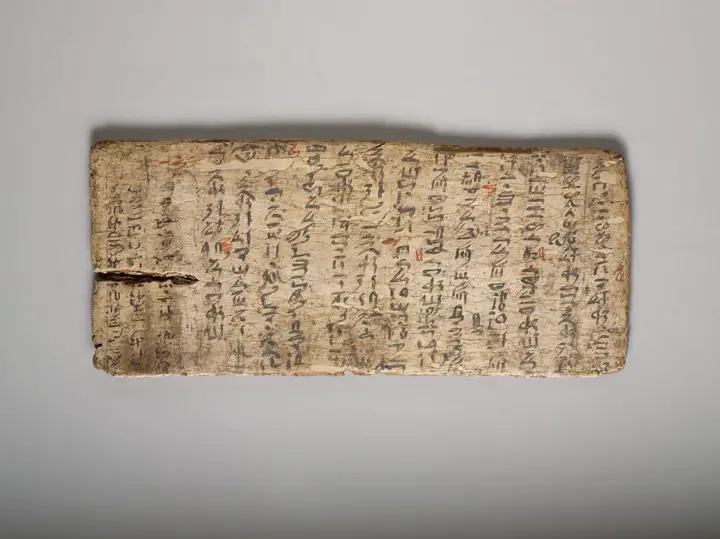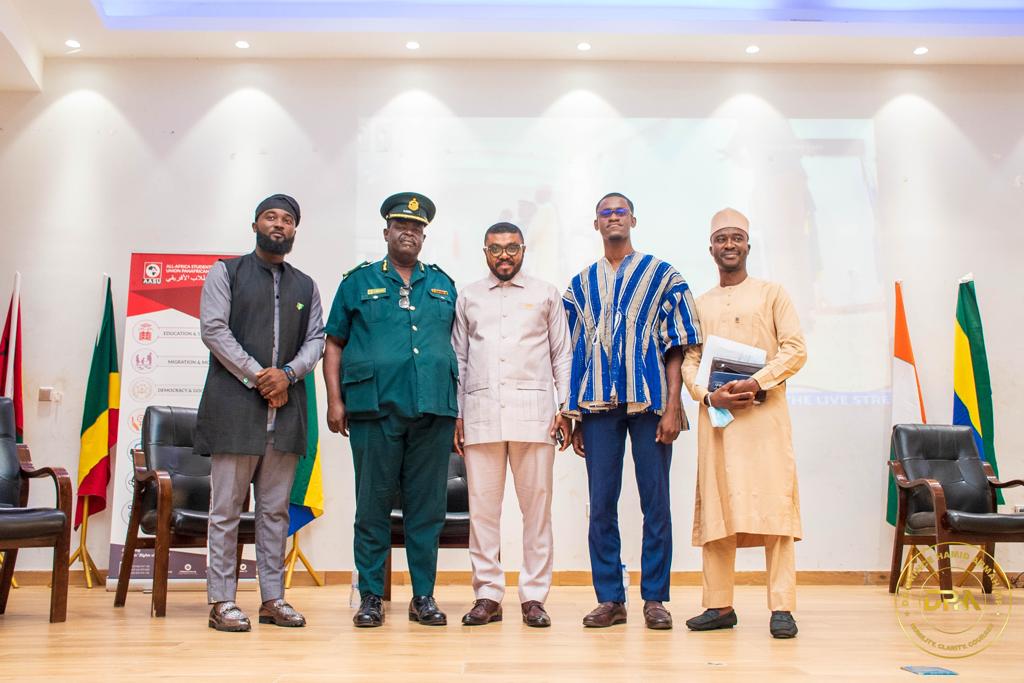expect future generations to be more innovative in order to save this planet from its doomed future, but how are we supposed to do that when we are using the same educational system used in ancient Egypt? Some may say we’ve come a long way, but they’re just lying. Social systems have not been updated but adapted to technological changes. Humanity has read on cave walls, papyri, books and now on screens, but they still do the same thing.
The gesso painting you see above has been trending online lately, although it’s not a recent discovery. It has been in the collection of the Metropolitan Museum of Art in New York for almost 100 years since it was donated to the museum by Edward S. Harkness in 1928. The gesso boards had been used by students to practice their calligraphy since 3000 BCE. Their distinct alphabet was made up of hieroglyphics with about 1,000 distinct characters representing sounds and concepts.
This specific chart was also featured in William C. Hayes’ book “The Scepter of Egypt” where he writes that the exercise scrawled on the chart is the work of a student named Iny-su from Sekhsekh. The text is a letter to his brother Peh-ny-su where he comments as if his brother were a wealthy authority figure. Notes in red represent corrections made by the teacher based on spelling and grammar. Egyptologists (including William C. Hayes) believe this painting dates from 1981 to 1802 BCE.
These exercises were usually given to students who were willing to work for the government. You might be surprised, but the government of ancient Egypt was extremely organized in recording while writing it. This led to a lot of texts that needed to be written quickly, so excellent calligraphy was really appreciated. The ancient Greeks and Egyptians really understood the importance of education and developed the system that we still use today.
Students are given a certain subject on which they are taught the basics. Once they understand the basics, they are given homework to do their own independent study. After a while, they take an exam to test their knowledge on this subject. That’s how they did it 4,000 years ago and that’s exactly how most countries still do it. You could say that it is one of the oldest social systems that has not been changed.
Being force-fed information and having to regurgitate it onto a piece of paper has worked, but it’s pretty old. I believe there is something more effective, in fact many other methods from which students can learn more. The main problem with this classical education system is that it thinks that every student learns in the same way.
Some students are blessed with a photogenic memory, while others have the ability to calculate thousands in their minds in seconds. We all learn in our own way and the most important aspect is that some students are better in practice than in theory, which is why some people fail written exams.
It’s not just about what each student likes or finds most effective, but about the practicality of assessment. I think back to all the subjects I reviewed in high school and I’m still looking forward to using the Pythagorean theorem in my everyday life. A new educational system should reflect on the practical aspect of the assessments given to students.
A 2012 study by Mark Huxham, Fiona Campbell and Jenny Westwood of Edinburgh Napier University looked at the timing of assessments that students prefer (oral or written). The results showed that most students preferred oral assessments based on their attitudes and performance because they found them more convenient for establishing professional identity.

It is not only about efficiency and practicality, but also about exercising student’s creativity. We are all interested in different professions and subjects of study, but how are we supposed to see what we do best if we all follow the same subjects at the beginning of our school career? Just like in ancient Egypt, children were given homework and they were corrected according to criteria. These criteria set by the pedagogical council are what stops creativity.
Creativity is meant to be embraced by the freedom to accept mistakes for what they are. The best way to learn is to make mistakes, so shouldn’t we be pushed to make as many as possible? The means of writing and reading may have changed, but the learning exercise remains the same. As described in another study, each student’s learning must be personalized based on the characteristics of the student as well as their cultural background.
Blended learning was the last attempt to change our education system, but it only forced it to adapt to the digital age. The same exams are now taken on a computer, which makes cheating a bit easier. One could argue that blended learning had actually pushed back the evolution of the education system by removing the practical aspect.
We need to give students more freedom to choose their own curriculum from an early age that focuses more on building a practical future. Rather than spending years and thousands of dollars trying to figure out what they want to do in life, wouldn’t it be easier to get them to come to a consensus at an early age?
I want to ask, what is the real difference between a student of ancient Egypt dating back to 2000 BCE and a student of our time? One works on a rock and the other on a laptop. The similarity is that they are most likely both learning something that they will never use in their life.
Passionate writer with an invaluable knowledge of Humanity!
Upcoming Historian with over 30 million views online.
Specialized in contemporary history.
atapalaga97@gmail.com



